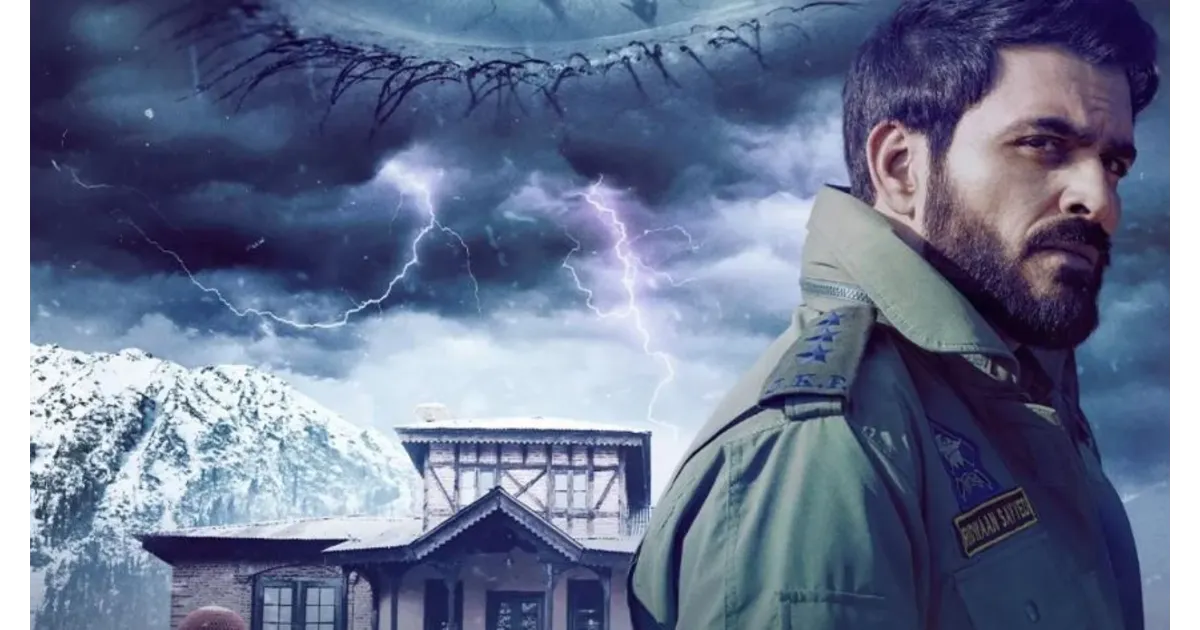
Beyond Shadows and Screams
Manav Kaul’s Baramulla, streaming on Netflix, isn’t your usual horror film filled with jump scares or flickering lights. Its terror doesn’t hide in the dark—it lives in memory, loss, and displacement. This chilling drama is less about ghosts and more about the emptiness left behind when home, identity, and belonging are stripped away. Beneath the surface of its mystery lies a quiet, devastating truth: the horror of being uprooted from one’s own history.
A Story Rooted in Silence and Search
At the center of Baramulla is DSP Ridwaan Sayyed, played by the ever-compelling Manav Kaul. Tasked with investigating a series of child disappearances in Kashmir’s Baramulla district, Ridwaan finds only a single trace of evidence—locks of scissor-cut hair. What starts as a routine police inquiry slowly mutates into a descent into collective trauma. Each clue he uncovers pulls him closer to an invisible sorrow, where the past refuses to rest and the present trembles under its weight.
Memory as the True Monster
The brilliance of Baramulla lies in how it builds dread—not from what is seen, but from what is remembered. The story begins like a political thriller, yet evolves into an emotional excavation of grief and belonging. Ridwaan’s investigation becomes an inward journey, forcing him to question not only the world around him but also the truths buried within himself. By the time the final revelation surfaces, it’s no longer about justice—it’s about endurance, faith, and the ache of remembrance.
Manav Kaul’s Poised Brilliance
Kaul’s portrayal of Ridwaan is a masterclass in controlled emotion. His performance burns slow but deep—a man torn between duty and despair, between the badge he wears and the ghosts he carries. His moments with his teenage daughter are tender yet heavy with guilt, showcasing Kaul’s remarkable restraint. One can’t help but wish the film had found space on the big screen; his quiet power deserves a larger canvas.
Bhasha Sumbli: Grace Under Grief
Opposite him, Bhasha Sumbli delivers a luminous performance as Ridwaan’s wife. She embodies the unspoken pain of those who endure loss without words. Her silence speaks volumes, and her presence holds the emotional thread of the film together. Sumbli turns stillness into strength, pain into poetry.
The Climax: Where History Becomes Horror
Baramulla reaches its emotional peak in a searing finale that transcends cinema. Here, the horror isn’t fictional—it’s historical. The film confronts the exodus of Kashmiri Pandits in the early 1990s, treating the tragedy with reverence, not sensationalism. Kaul doesn’t merely depict pain; he translates it into a visual prayer for memory and peace.
A Prayer for the Displaced
More than a film, Baramulla feels like an act of remembrance—for families torn apart, for stories silenced, for homes that exist only in dreams. It attempts to offer solace, however fleeting, to those who still look back with longing.
Imperfections and Impact
The film’s first half stumbles in pace, flirting with unnecessary scares that slightly dilute its emotional potency. Yet once Baramulla finds its rhythm, it’s unstoppable. Its stillness, once understood, becomes its sharpest weapon.
Netflix’s Bold Offering
With Baramulla, Netflix India delivers one of its most profound originals in recent memory. It’s a film that reminds us that true storytelling doesn’t need spectacle—it needs sincerity. Kaul’s creation proves that horror can heal, and that remembering, however painful, is sometimes the bravest thing we can do.




